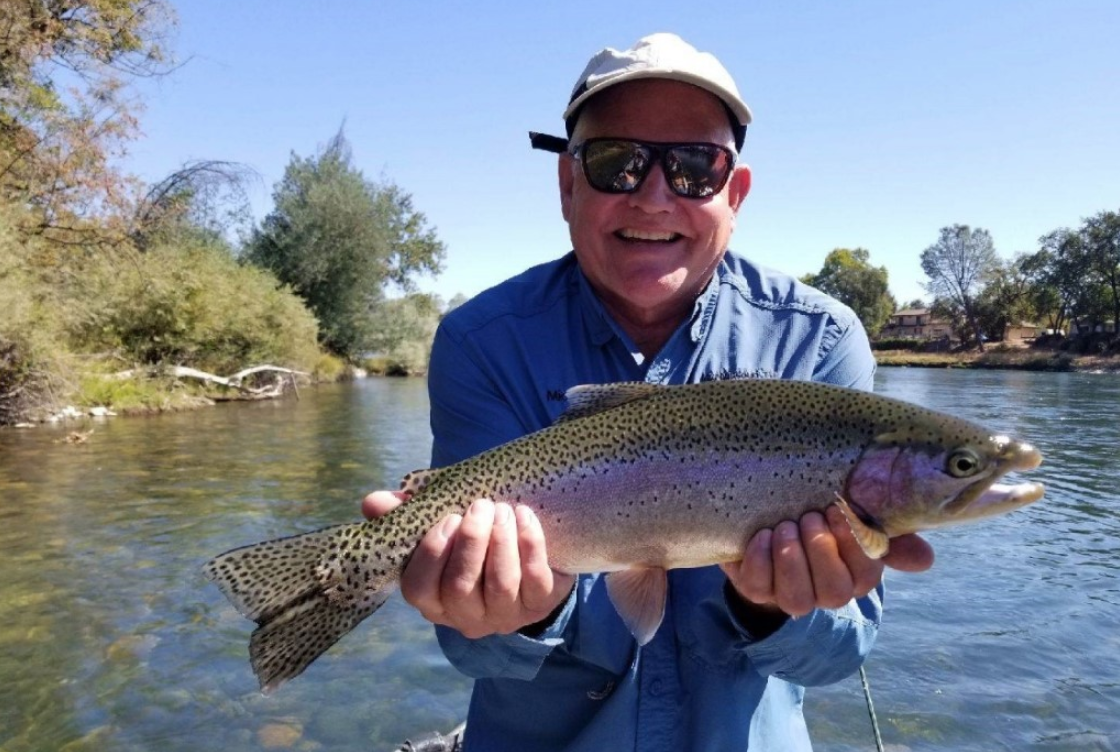By Michael Riley
Tailwaters are known for their ability to provide clean, cold water conditions suitable to support robust trout populations. Tailwaters can provide cold water during dry conditions and also help negate the effects of flooding. But as drought and flash flooding become more extreme with climate change even tailwaters have their limits, leaving the trout vulnerable. In the drought-ridden West, competition for water held in reservoirs is fierce and tailwater conservation flows for trout are in jeopardy. In the mid-south, record-setting floods pose a different problem, namely by reducing water quality. This was exemplified by the fish kill at Shepherd of the Hills Hatchery (Taneycomo tailwater, Branson Mo.) on the renown White River in the fall of 2015, in the heart of the Ozarks where I fish.
Table Rock reservoir and its tailwater, Taneycomo, experience the thermoclines and turnover typical of many large lakes with tailwaters. In the spring and summer surface water absorbs a lot of the sun energy, warming it up and making it buoyant. As the lake becomes deeper mixing is incomplete and the lake begins to stratify, eventually developing thermocline layers with warmer oxygen-saturated water on top, a plume of water with low dissolved oxygen, and a colder, denser, better-oxygenated water layer on the bottom. The low disolved oxygen in the plume is further depleted by anaerobic microbes. As the plume is being drawn out the bottom of the dam, it is often necessary to use supplemental oxygen to meet the disolved oxygen needs of trout in the tailwater. In the fall, surface water cools off, becoming denser, sinking, reducing stratification, and eventually causing a turnover.
In a typical flood year, the deficient oxygen layer starts in the upper part of the lake at a depth of 20 to 30 feet. The historical flood of July 2015 brought in extreme levels of nutrients, enhancing aerobic metabolism of various bacteria and creating an exceptionally large disolved oxygen-deficient zone of 20 to 100 foot depth. Without oxygen, subsequent secondary metabolism occurred (by other anaerobic bacteria, in the same processes that occur at a waste treatment facility), creating dissolved gases that are very toxic to trout. When the Corp of Engineers rapidly drew down the water level to achieve a water conservation pool, this enormous zone of toxic gases entered the hatchery and started a fish kill. Nitrogen levels were measured at 125 percent acute toxicity levels. Hydrogen sulfide measured at 0.4 parts per million, 45 times the acute toxicity levels (data for methane were not presented). Extreme aeration and oxygen bubbling by the hatchery managers allowed rapid out-gassing of these toxic gases to the atmosphere, preventing a total trout kill. By the time the water reached the last rearing pond holding brown trout, there was no effect. Here’s a full report by the Missouri Department of Conservation.
Bottom line: Extreme flooding can affect the water quality for trout residing in tailwaters and their hatcheries.
Since that time, another record-setting flood occurred in April 2017 on a nearby river, the North Fork of the White. It flows into Norfork Lake with its associated Norfork tailwater and hatchery. According to Ken Shirley, fish biologist for the Arkansas Game and Fish Commission, Norfork Lake experienced the anticipated small fish kill of striped bass, walleye and yellow perch in the reservoir. The Norfork hatchery manager, Jon Casey, reported an extended period of low disolved oxygen that fall, as expected from the high nutrient waters from the flood. Low disolved oxygen is easily mitigated by injecting oxygen, and no significant fish kill was experienced. But, in order to bring the lake level down quickly, the Corp of Engineers turned on all generators non-stop, exhausting the cold-water reserve at the bottom. The long period of higher water temperatures in the hatchery allowed for a host of parasites and disease issues that did cause some mortality.
Take home lesson: Both of these events were historical, record-setting events like those predicted to be associated with climate change. Such extreme flooding events can cause severe consequences for tailwater trout and their hatcheries, so be on alert.
Michael Riley joined Mid-Missouri Trout Unlimited in 2001 and has served in a variety of offices. He is the current NLC Representative for the Ozark Council.



